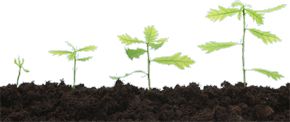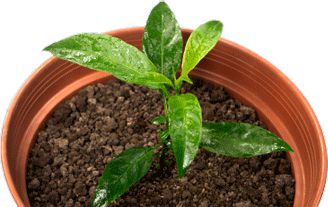Soil Preparation
Soil Preparation

Soil preparation is one of the most frequently overlooked but essential elements of a water conserving landscape. Plants obtain nutrients, air, and water through the soil which also provides structural support for the plant’s root system. The type of soil preparation necessary to support healthy plants is dependent on the type of plants being grown and the condition of the soil.
Soil Quality

There are many ways in which soil quality can be affected; soil at a new construction site is often compacted from heavy equipment use and topsoil may be removed. Older landscape sites may be depleted of nutrients through wind, erosion, or poor soil maintenance. Therefore, before investing in any landscape project, it's a good idea to have your soil tested. Your local university cooperative extension will test your soil for a small fee and provide you with information regarding texture, water-holding qualities, acidity, nutrients, and salinity. In addition, they will provide specific direction on fertilizer needs and soil amendment opportunities.
Soil Improvement

Soil preparation may include alteration of the physical structure of the soil, chemical alteration, or both. While some plants prefer sandy well drained soils, and others prefer moist, clayey soils, most prefer something in between called "loamy soil." For a quick and easy way to determine the physical structure of the soil, drench a patch of soil, and let it dry out for a day. Pick up a handful of the moist soil and squeeze it firmly. If it forms a tight ball and is slippery, it probably has high clay content. If it feels gritty and crumbles when you open your hand, it is sandy. If it is slightly crumbly but still holds a loose ball, it is a loam combination. Soils that are too sandy or too clayey can be improved by mixing in ample amounts of organic matter, such as compost or peat. The addition of organic matter improves the water-holding capacity of sandy soils and reduces the tendency of clay soil to compact.
If your soil can benefit from the addition of organic material, compost, sphagnum peat moss, or well-aged manure should be added to turf and landscape areas and tilled to a depth of 6-8 inches. A minimum of 3 cubic yards per 1000 square feet will improve water retention and increase lateral movement of water in sandy soils and water penetration and infiltration rates in clay soils. The addition of organic material will also provide essential nutrients necessary for healthy plants.
Improving the soil encourages more vigorous root systems, which in turn makes more water available to the plants. Compost and peat moss are particularly good for improving the soil structure while aged manure provides many of the nutrients that are often lacking in clayey or sandy soils. Soil amendment is particularly necessary in areas to be planted with high water use plants and the entire area needs to be amended. Adding soil amendment to just the planting hole of trees and shrubs actually limits the growth.
Soil and Plant Selection
Native plants and plants suited to the natural precipitation are usually those that thrive in the natural soil conditions and often prefer little or no soil supplement. In general it is more practical and less frustrating to select plants that are appropriate for your soil conditions than to change your soil conditions to suit the plants. Native plant species from your state or region are almost always better suited to your soils than non-native, exotic plants.

